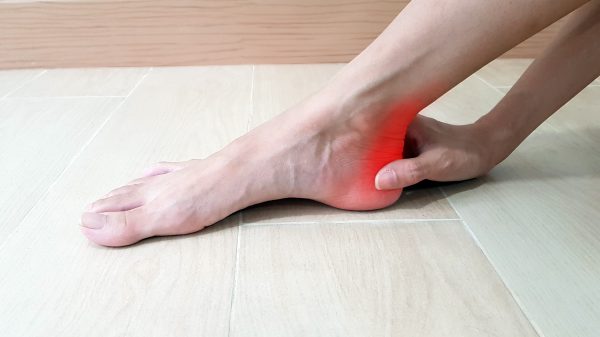Have you been experiencing heel pain or inflammation? While there are a number of reasons your heel might be hurting, a sharp pin-like ache or dull ache shooting towards the back of your foot is a probable symptom of a bone spur.
Let’s explore a few ways to relieve your bone spur pain and get you back on your feet:
Research Possible Culprits
Before reading about how to treat a bone spur, please see if any of the following symptoms and causes apply to you.
Even if you check many of these boxes, a few other foot conditions like Plantar Fasciitis, Posterior Tibial Tendonitis, and Achilles Tendonitis can produce similar symptoms and pain— yet all require differing treatments.
While it’s important to be properly diagnosed before seeking treatment, these tips can be helpful ways to temporarily relieve any foot pain you are experiencing until you can see a podiatrist.

1. Ice Press
Because bone spurs often cause inflammation, cold compression is a nice way to bring down some of the swelling and act as a temporary relief. After removing your cold press from the freezer, wrap it around your heel for 10 minutes. Reapply every hour as the pain persists.
2. At-Home Stretching Exercises
Many find short-term relief in performing foot flexes and calf stretches that target the muscles surrounding the area of the bone spur.
Healthline offers two great exercises that you can try right at home in the morning, afternoon, or evening. People with bone spurs typically report the most pain first thing after they wake up or after physical activity, so it can be helpful to perform these stretches at the first sign of irritation.
For our runner’s experiencing heel pain, check out our Preventive Measures Runner’s Guide.
3. Physical Therapy
If your pain is intense or you are concerned about properly performing the stretches, consider seeking physical therapy. These routine appointments with a trained podiatrist can help to ensure you are doing the best exercises for your condition and its severity and to track how your pain improves or worsens.
4. Shoe Adjustments
Many experience foot pain because they wear improperly fitted shoes. If you follow our recommendations for finding the right fit and are still experiencing heel pain, you may need specialized footwear or adjustments to your everyday shoes. Custom shoe inserts or orthotic devices can often bring relief without having to limit your footwear choices. While you could try generic heel seats or cups, a podiatrist can recommend or custom mold the best sole for your unique situation.
5. Night Splints
A night splint can help to keep your foot flexed while asleep so that you’re not tightening or burdening your Plantar Fascia overnight. This is often a good recommendation for those who wake up with heel pain who irritate their soft muscle tissue in bed.
6. Over-the-Counter Medications
Anti-inflammatory medications like Aspirin, Ibuprofen, or Naproxen can help to ease mild discomfort associated with bone spur pain. Advil, Motrin, and Aleve often help, but should not be long-term solutions for your heel ache problem.
7. Surgery
Because bone spurs are hard, smooth bumps composed of extra bones that form on the tips of bone, they don’t go away. If this bone growth pain worsens, surgery is sometimes the only option for relief. While often viewed as a last resort, a podiatrist can help you determine the severity and ideal treatment options for your heel pain.
Get the True Diagnosis
Our team at Foot & Ankle is here to diagnose and treat your heel pain, regardless of the cause— but the only sure-fire way to confirm if it’s a bone spur is to perform an X-ray.
Schedule an appointment to know for sure, today.
Categorized in: Blog
Comments are closed